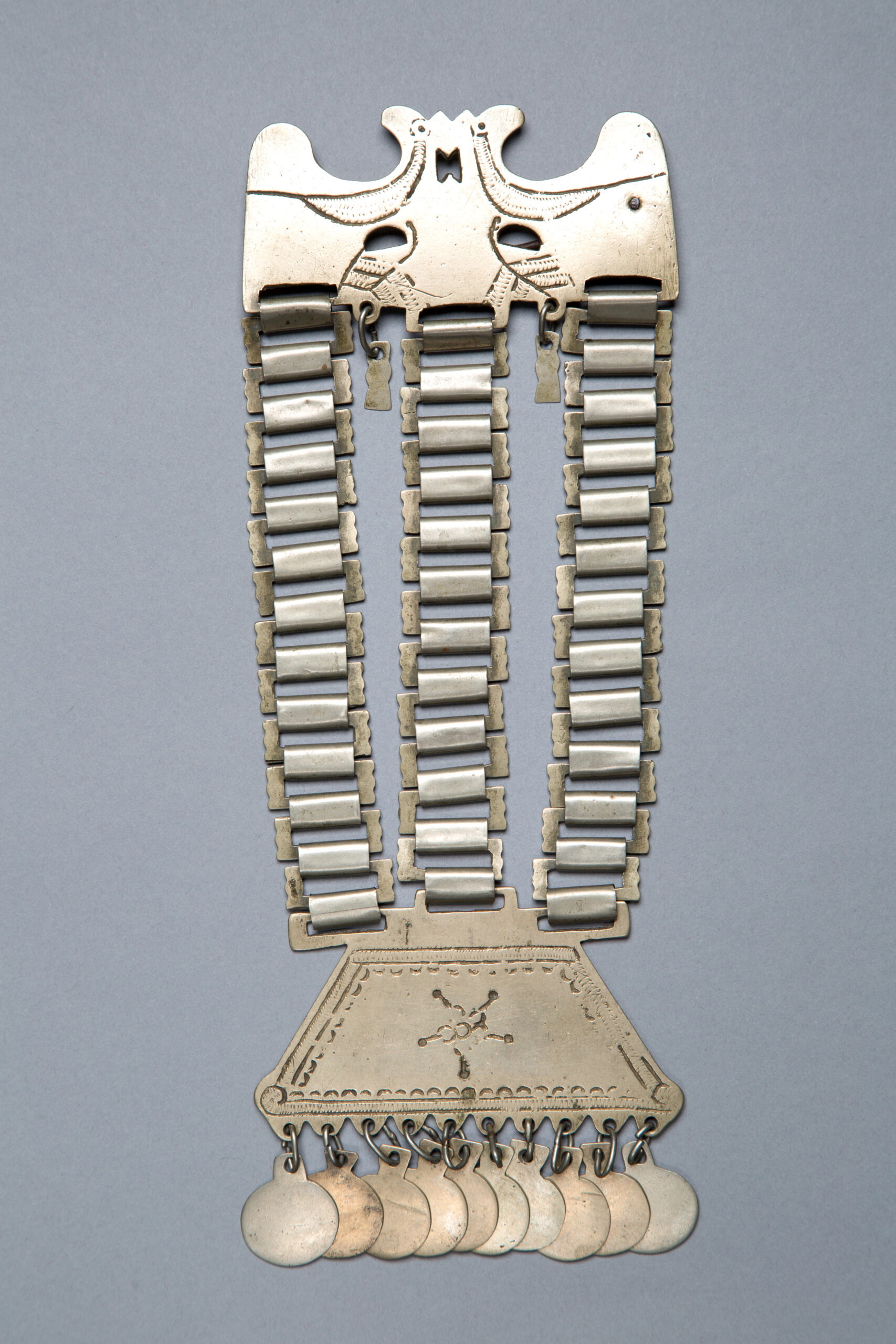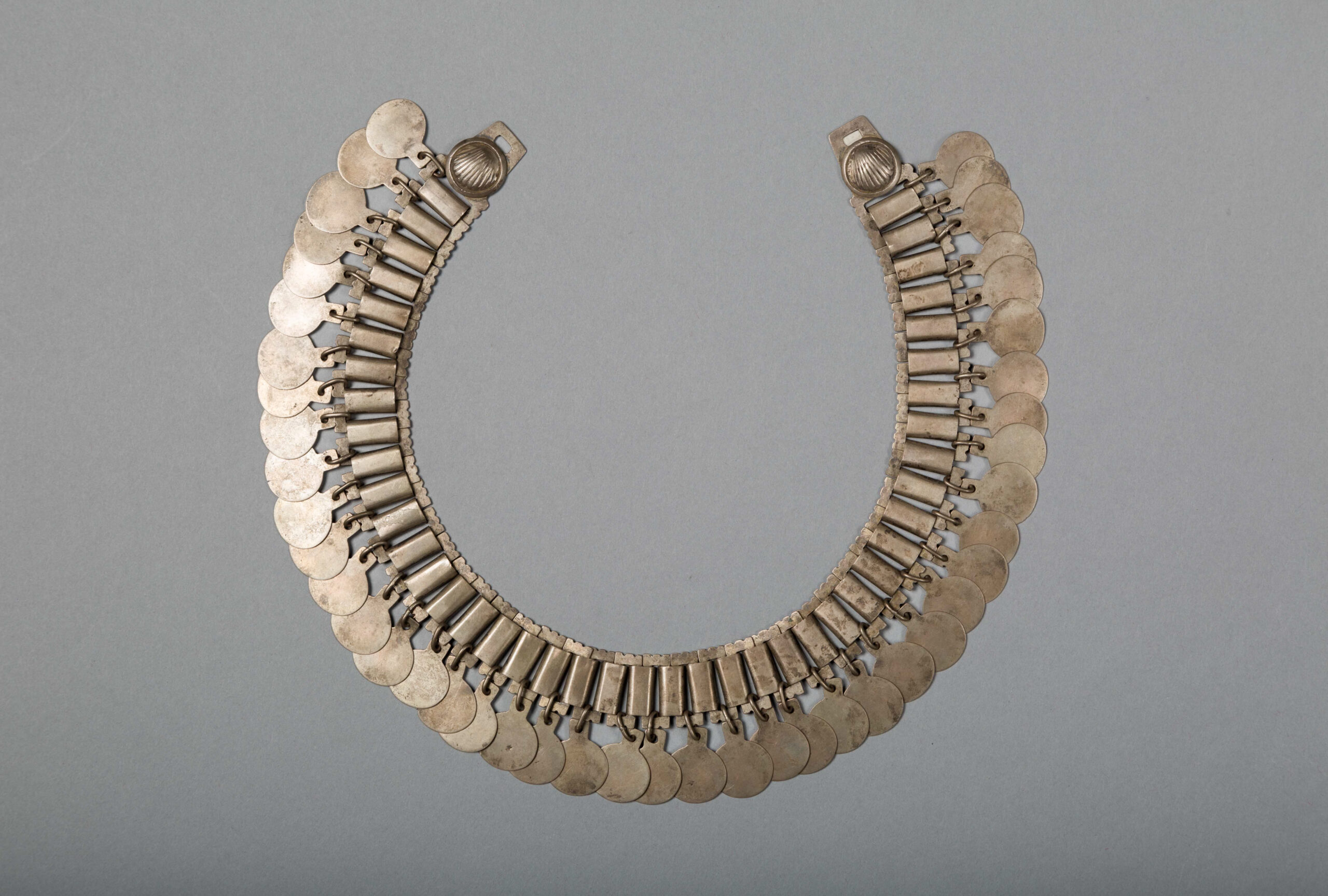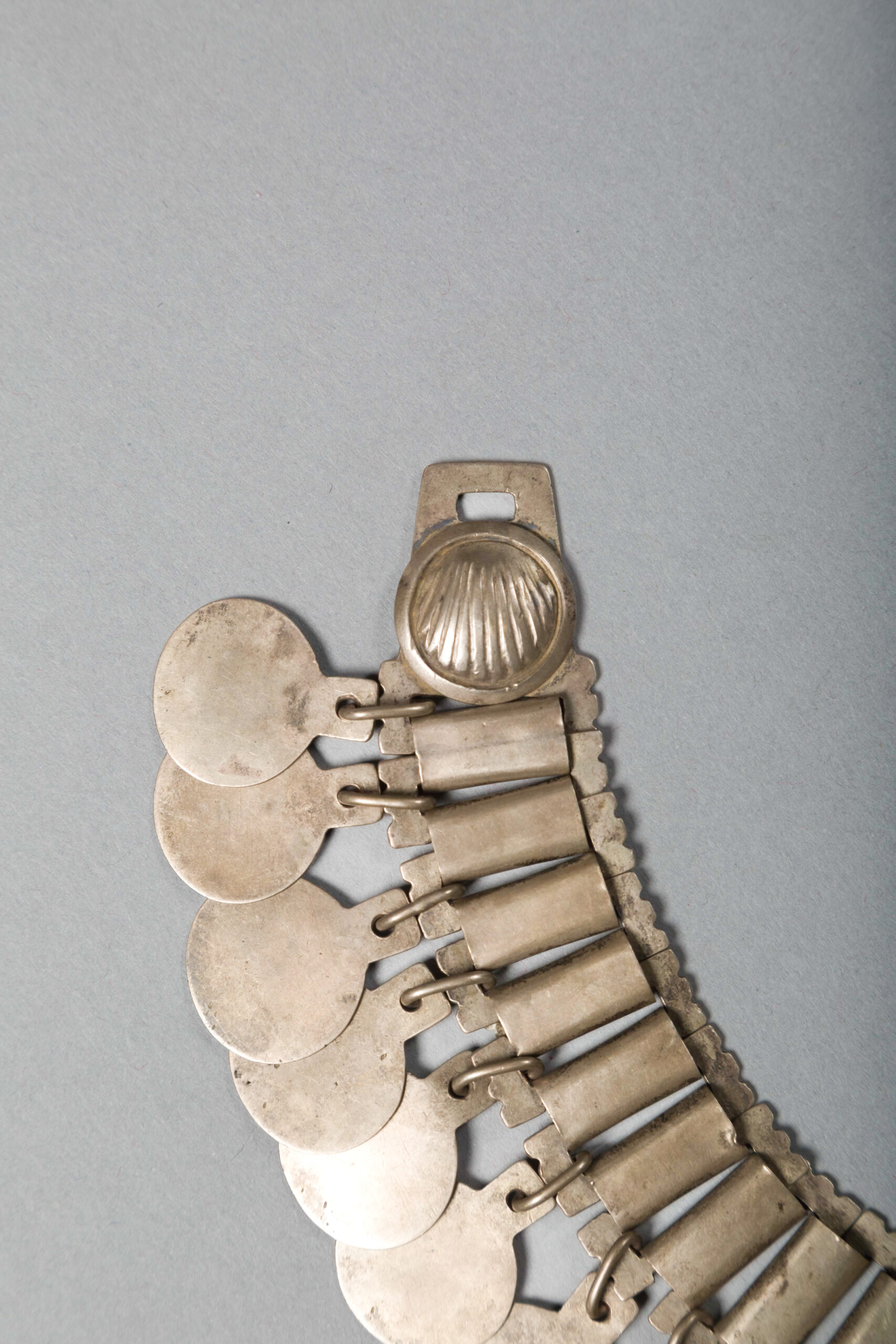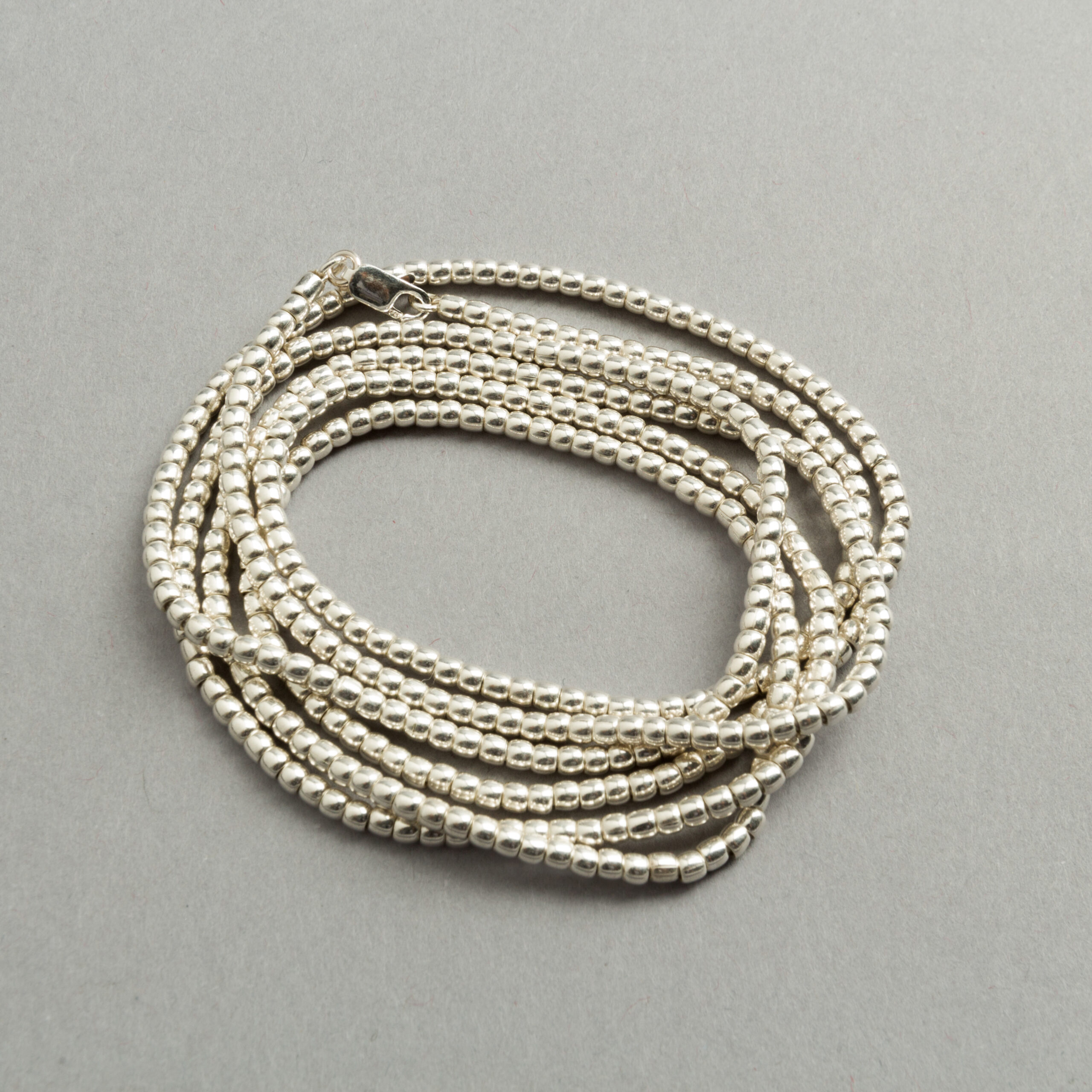Description
A la época de la conquista hispana en el territorio sur de Chile habitaban los mapuches, pueblo que se componía de una serie de grupos independientes que compartían un mismo territorio, idioma y ciertos rasgos culturales.
Su sistema económico tradicional, era basado en la caza y la horticultura, luego en los siglos XVIII y XIX se adaptaron a un sistema campesino de agricultura y ganadería.
Actualmente el pueblo mapuche presenta un gran fraccionamiento cultural, con una migración hacia las grandes ciudades, principalmente en Santiago y Temuco, aunque vinculada en diferentes grados con sus comunidades de origen.
Los pueblos mapuches trabajaron la metalurgia en la época prehispánica, pero fue con el encuentro hispano que llegaron a desarrollar una orfebrería en plata de gran riqueza, simbolismo e identidad. Como material usaron las monedas de plata hispanas disponibles en la época para el comercio.
A fines del siglo 19 entre los años 1840 a 1896 fue la época de auge de la orfebrería mapuche. Tuvo mucha influencia de criollos que vivieron con los indígenas y enseñaron sus conocimientos
Confeccionaron enseres para el caballo como espuelas, estribos, frenos para los caballos, con que los caciques demostraban su riqueza y poderío, como también una amplia gama de joyas para las mujeres. Estas fueron variando con el tiempo.
La orfebrería femenina tuvo un gran crecimiento en esos años, en que se renovaron muchos de los diseños, aplicando técnicas más refinadas que se aprecian en la riqueza y diversidad de piezas que se pueden encontrar hoy en colecciones y museos.
Actualmente permanecen muchos plateros mapuches que continúan confeccionando joyas tradicionales como también nuevas versiones de ellas, generalizando una línea más comercial, de versiones en pequeño formato de las grandes piezas de antaño. Lamentablemente las piezas relacionadas a lo ecuestre y a los objetos cotidianos, hoy ya no se producen.
English
Mapuche silverware
At the time of the Hispanic conquest, the Mapuche inhabited the southern territory of Chile, a people made up of a series of independent groups that shared the same territory, language and certain cultural traits. Their traditional economic system was based on hunting and horticulture, then in the 18th and 19th centuries they adapted to a peasant system of agriculture and livestock farming.
Currently, the Mapuche people are culturally fragmented, with migration towards the big cities, mainly in Santiago and Temuco, although they are linked to different degrees with their communities of origin.
The Mapuche people worked with metallurgy in pre-Hispanic times, but it was with the arrival of the Spaniards that they developed a rich, symbolic, and highly identifiable silverwork. They used the Hispanic silver coins available for trade at the time. At the end of the 19th century between 1840 and 1896 was the peak of Mapuche goldsmithing. It was greatly influenced by Creoles who lived with the indigenous people and taught them their knowledge. They made horse equipment such as spurs, stirrups and horse bridles, with which the chiefs demonstrated their wealth and power, as well as a wide range of jewellery for the women. These varied over time.
Women’s goldsmithing grew considerably during those years, when many of the designs were renewed, applying more refined techniques that can be seen in the richness and diversity of the pieces that can be found today in collections and museums. Nowadays, many of the Mapuche silversmiths still remain in their collections and museums.
Unfortunately, the pieces related to equestrian and everyday objects are no longer produced today.






Reviews
There are no reviews yet.